Engagement Ring - In Progress
Setting
Stone
Purchase any Engagement Ring and receive a $250 Gift Card for your Wedding Band. Ends soon.
Deepen the well of love in the world.
We guarantee that every single purchase directly impacts one person's life by giving them access to clean water.
Have you been bewitched by the fiery color and unique appeal of an Opal Engagement Ring? You’re not alone! Opal has been a coveted gem since Ancient Rome. But, what many do not know is that Opal is quite soft, making it not the right choice of engagement ring for everyone. Fortunately, there are tips and tricks to caring for this soft gem which will help it last for a lifetime. There are also harder gem options that give a similar look to Opal! So, let’s plan your perfect Engagement Ring!
Opal is a unique silica-based gem that exhibits dancing color flashes when rocked side to side. This dazzling effect is called “play of color” – and for good reason – it looks like a rainbow bouncing around inside the stone! Opal forms when mineral-rich water seeps into rock crevices. When the water evaporates, it leaves behind Opal in the shape of the crevice! About 90% of the world’s Opal is mined in Australia. It ranks around 5.5-6.5/10 on the Mohs Hardness Scale (depending upon how much water is left in your stone). In other words, Opal is one of the softest gemstones used in jewelry. This is important when considering an Opal engagement ring, which may need to stand up to some wear and tear. But, we’ll get to how to handle that later.
While most people think of Opal as being a white gemstone, Opal actually comes in a variety of colors. Opal is classified by the color of its main background color, instead of the color it flashes. They can come in white, black, grey, and orange main backgrounds. And they can flash all the colors of the rainbow! So, there is definitely a color combo to match your love.
White Opal is the most common Opal on the market and what typically comes to mind when people think of “Opal.” It shows rainbow-colored flashes of light on a white background. These flashes can be long and broad, or small and glittery. Lower quality White Opal may show very little play of color at all, and instead, will appear like a simple pale white stone. Couples choosing a White Opal Engagement Ring should look for bright, multi-colored play of color.
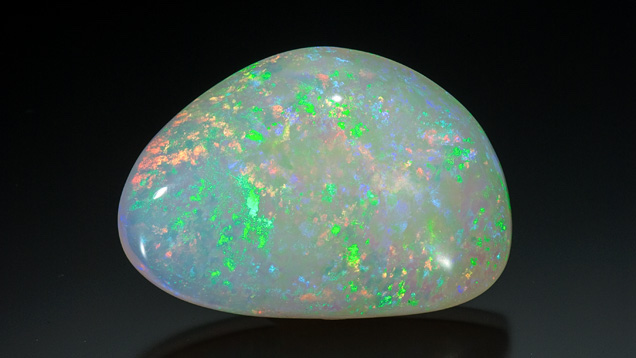
White Opal (Photo by: GIA)
Mexican Fire Opal is a bright fiery orange. Some stones exhibit orange and yellow play of color, others do not show play of color at all. While often appearing in cabochon form (a gemstone style with a flat bottom and a rounded top), Mexican Fire Opal is also regularly faceted. This is due to the fact that Fire Opal is often more transparent than its brothers and sisters. Couples choosing a Fire Opal Engagement Ring should look for great clarity – make sure there’s no cracks (called “crazing”) that will take away from the stone’s beauty.
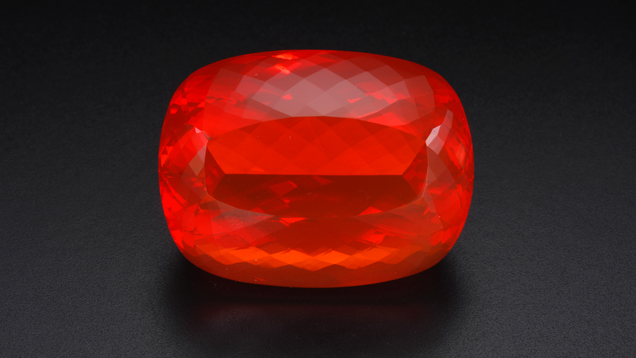
Mexican Fire Opal (Photo by: GIA)
A smoky body color is the hallmark of Black and Grey Opal. This dark background helps show off the Opal’s dramatic play of color, which can flash red, blue, green, and yellow. Black Opal is the most rare and expensive form of Opal, while red play of color is the most sought after. Couples choosing a Black or Grey Opal should ensure the play of color extends fully across the stone. Dead spots detract from value and beauty.
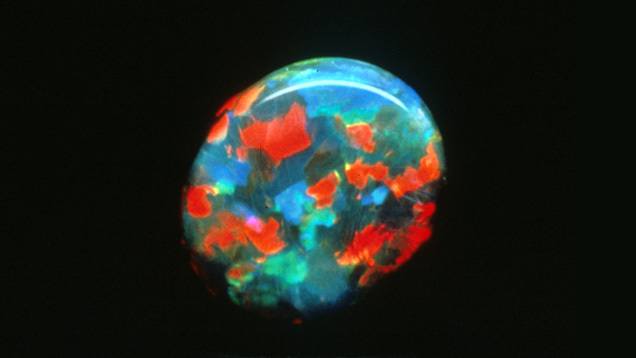
Black and Grey Opal. (Photo by: GIA)
Crystal Opal is what it sounds like – a jelly-clear crystal with flashes of color! The main color of this gem may be completely clear, or have hints of white, grey, or black. Often, Crystal Opal’s play of color is so extravagant that its main color is not really that noticeable. Most frequently cut as a cabochon, Crystal Opal is also sometimes faceted. Couples choosing a Crystal Opal Engagement Ring should look for stones that have a high degree of transparency from all angles. Tilt that stone around and look through it! Patches of opacity (lack of see through) will detract from beauty.
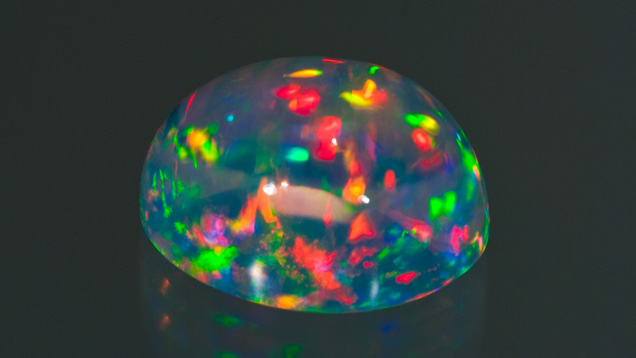
Crystal Opal. (Photo by: GIA)
Boulder Opal is a gem that includes part of the rock it was found in! Gems are cut in this fashion when attempting to pull the Opal from its boulder would result in the stone breaking. Boulder Opals should not be confused with Doublets (discussed below). Boulder Opals will have random pieces of host rock, not a sheet of dark backing. Couples choosing a Boulder Opal Engagement Ring should look for well-proportioned, well-polished gems, where the boulder does not detract from the beauty.
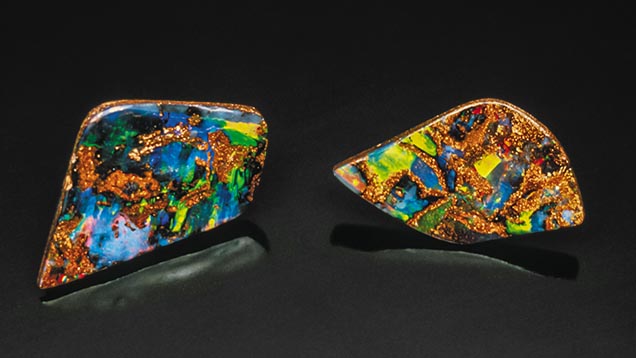
Boulder Opals. (Photo by:GIA)
In order to make an Opal more durable, a common enhancement is to glue a strong, dark backing to a clear piece of Opal. This type of Opal is a “doublet” (meaning two pieces). Similarly, a “triplet” has a dark backing and a clear quartz top. Couples should note that Doublets and Triplets, while being stronger than Natural Opal, are still not very hard. They are also less valuable than Natural Opal.
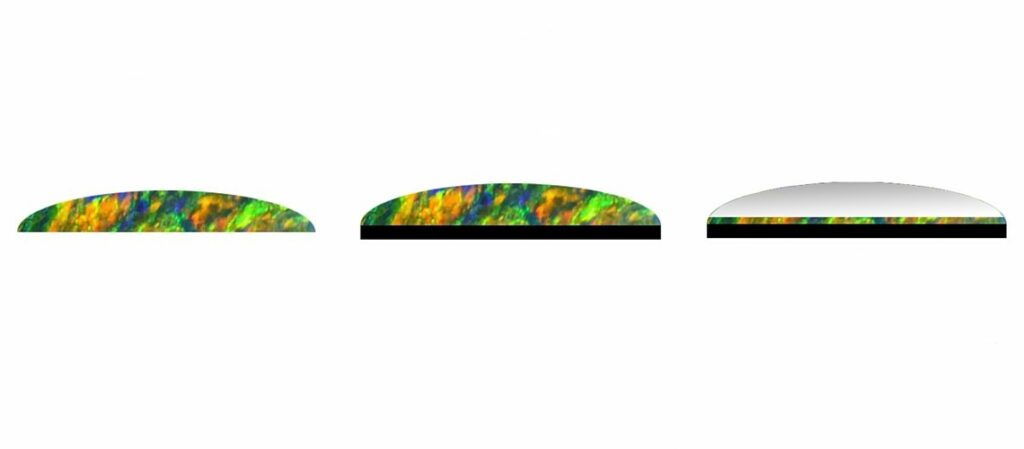
Left: Solid Opal. | Middle: Opal Doublet. | Right: Opal Triplet
Lab Opals are Opals created by man in a laboratory. While there is no real chemical difference between a Natural Opal and a Lab Opal, the calm, consistent environment in which Lab Opals grow (as compared with wild nature!) does result in a different look. Because we control what goes into the gem, Lab Opals are much more uniform in color and flash than their natural counterparts. In other words, where a Natural Opal may have a broad flash of light across one part of the gem and no flashes of light across a different section, Lab Opals will often show even flashes of light across the whole stone. Lab Opals also come in a larger variety of colors, such as lilac, lime green, bright yellow, etc. This huge variety in color and consistent flash are big factors in couples choosing a Lab Opal Engagement Ring.
Another benefit of choosing a Lab Opal Engagement Ring is that Lab Opals are a bit stronger than Natural Opals. Because Lab Opals form in a consistent way, with less water, they benefit from a denser makeup. As a result, Lab Opals are a bit stronger in practice than Natural Opals, however, they are still not very durable daily gems.
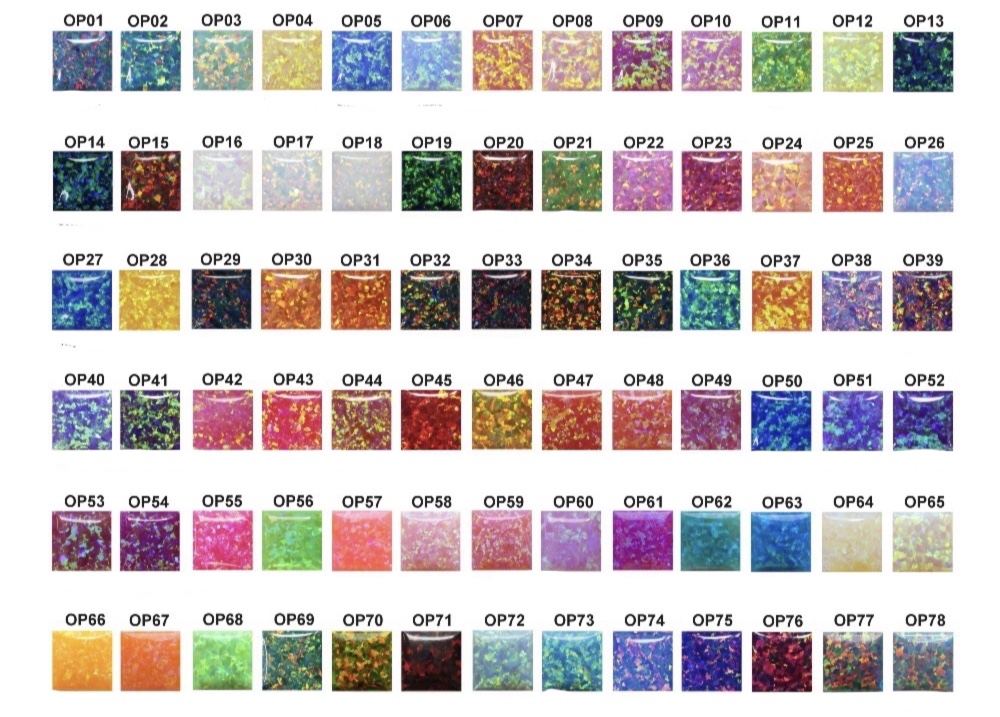
Color spectrum of Lab Opals. (Photo by: Gemsngems)
Couples choose Opal Engagement Rings for many reasons. Some are searching for a unique look, and many want a less flashy option than Diamond. Cost is another common factor. Opal Engagement Rings tend to be much less expensive than Diamond Engagement Rings.
Congrats on your special engagement! And your choice of a very unique engagement ring. Couples selecting Opal Engagement Rings tend to be romantic, artsy, or bohemian! Let’s talk about how to select your perfect stone.
As with all colored gems, Color is the most important factor. In Opal, this also includes the quality of its flash (or “play of color”). The most valuable Opal is black. This is because a dark background shows off play of color better than a light or clear background. The most sought after play of color is full-spectrum with a good portion of red. All that said, couples looking for an Opal Engagement Ring will often choose a lighter stone for a more traditionally “bridal” look.
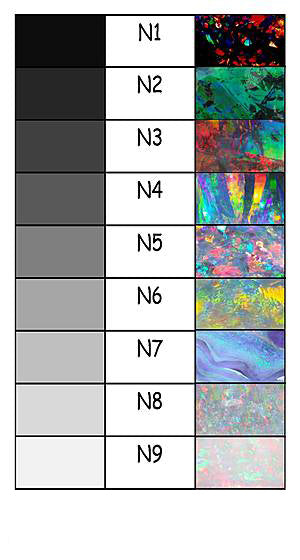
Some Opals show large flashes of color, others show patches of color (“harlequin”), and some others show tiny sparkles of color (“pinfire”). Gems with broad flashes of red have a “flame” pattern. “Peacock” patterns show blue and green! All couples will have a different pattern preference for their Opal Engagement Ring. No matter what pattern you choose, make sure that the pattern is evenly displayed over your gem – no dead spots allowed!

Opal Patterns from Left to Right: Harlequin | Peacock | Pinpoint | Flame
The cut of your Opal refers to whether its outline is symmetrical or free-form. It also refers to how tall your Opal is. Because Opal does not form in crystals like other gems, it comes in many more shapes. Couples should choose whatever cut they feel is most beautiful for their Opal Engagement Ring.
Because they are so soft, protective ring settings like our Callan bezel are the only kind of Opal Engagement Ring that should be considered. Bezel settings with diamond halos and other more unique designs are also incredibly beautiful. Have an idea? We’ll make it for you!
Maybe. Opals are incredibly soft. So, for very active couples or those who dislike removing their jewelry, an Opal Engagement Ring is probably not the best choice. For those willing to be exceedingly careful with their rings – and recognize that damage to your stone may occur even when being extremely careful – an Opal Engagement Ring may be right for you!
I suggest that couples choosing an Opal Engagement Ring weigh the benefits and risks, and also consider the alternatives, before deciding on one. The best Opal couples are those that want Opal no matter what, and won’t worry if they need to replace the gem later on.
Yes! Before choosing an Opal Engagement Ring, couples should consider the following alternatives which are more durable.
Star Sapphire is a variety of Sapphire which shows a unique star when light strikes the gem! It is whimsical, romantic, and very durable at 9/10 on the Mohs Hardness Scale.
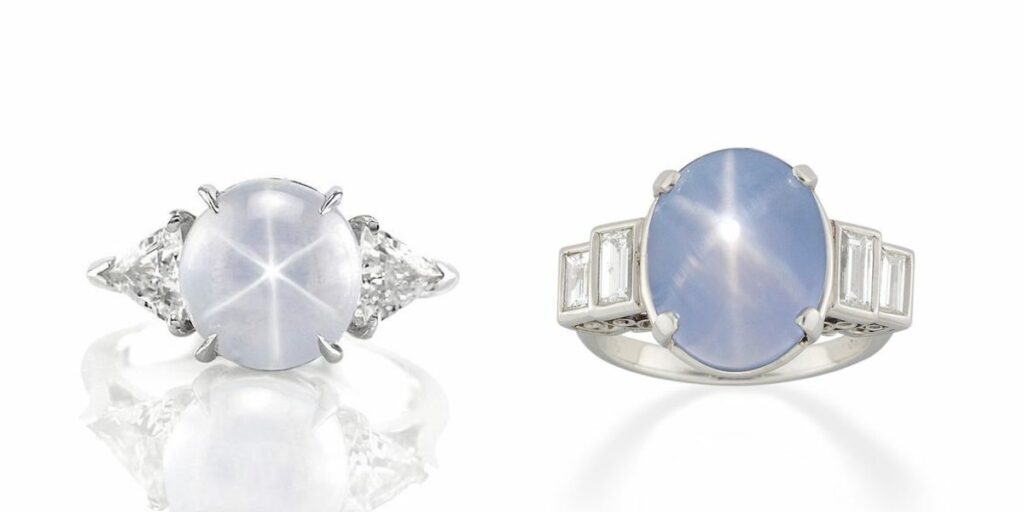
Left: White star sapphire engagement ring. | Right: Blue star sapphire engagement ring.
Cabochon cut Sapphire and Topaz both give a magical, billowy look that many couples love. Because of their supreme hardness – Sapphire is a 9/10 and Topaz is an 8/10 – they make excellent Opal Engagement Ring alternatives.
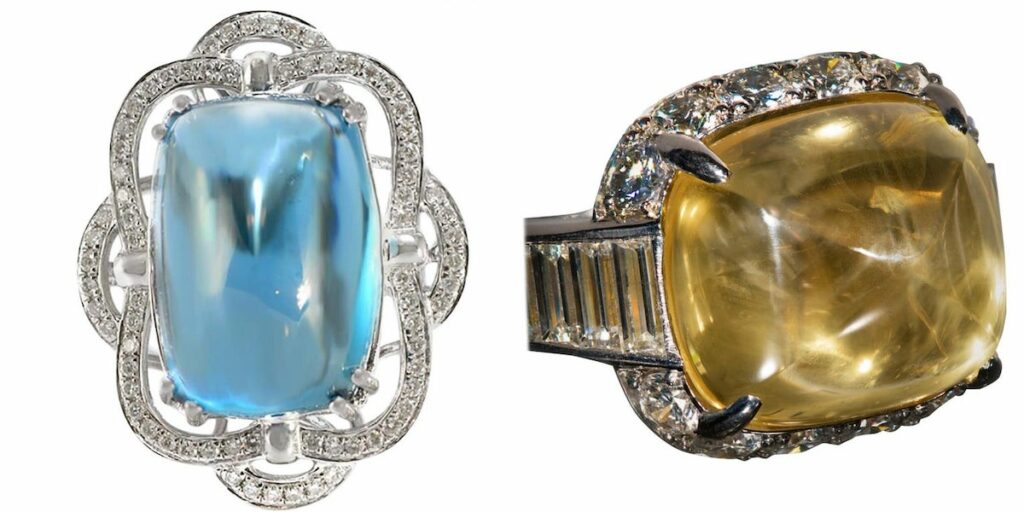
Left: Cabochon Blue Topaz engagement ring. | Right: Cabochon Yellow Sapphire engagement ring.
Alexandrite is a unique gem that changes from Green to Red depending upon the light it is in – some call it an “Emerald by Day, Ruby by Night.” In mixed light, Alexandrite often looks like a watercolor painting, with green, blue, purple, and red showing at the same time. It is quite durable at an 8.5/10. This often appeals to couples looking for an Opal Engagement Ring alternative.
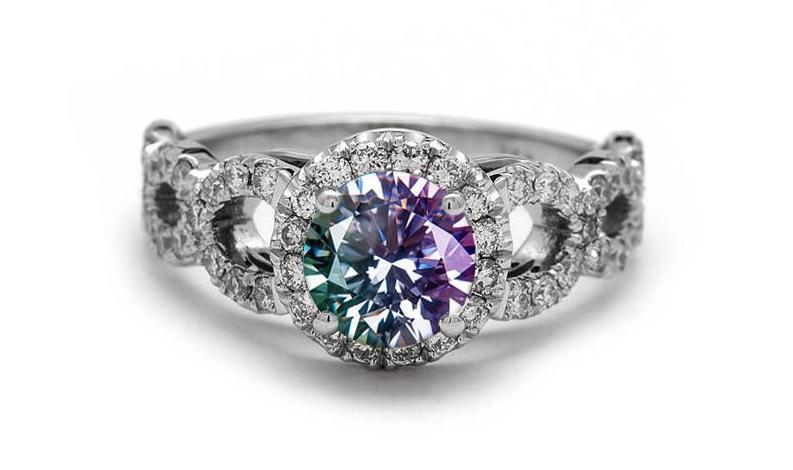
Alexandrite engagement ring. (Photo by: Juliet & Oliver)
Opal Engagement Rings require certain special care. Couples choosing an Opal Engagement Ring should practice the “last on, first off” rule. That is, your ring should be the last thing you put on before you leave your house, and the first thing you take off when you walk through the door. That means you get a great little ring dish to keep it in!
Do not shower with your Opal on, and do not use typical jewelry cleaner. Avoid ultrasonics and steam cleaners at all costs. Your beautiful Opal cannot take that kind of heat and will crack. Instead, use only warm water with a mild soap, like baby wash, to clean your Opal. In addition, couples should take care not to shock their Opal by going from extreme heat to extreme cold, or vice versa.
I’d love to! Feel free to email me with an idea of what you want in your Opal Engagement Ring and I’ll be happy to look for your perfect stone. Questions about whether an Opal Engagement Ring is right for you – or whether an alternative would be better? Drop me a line!
Verifiably Ethical & Sustainable
Guaranteed 1:1 Impact
Personalized 1:1 Customer Service
handcrafted & american-made
you before us, always
Diamonds, Gemstones, & Metals
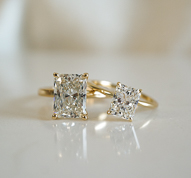
Every piece of Do Amore jewelry begins by not hurting the world. All our natural diamonds are either ethically sourced in Canada, recycled to eliminate additional demand, or accompanied by a blockchain ledger showing every hand your diamond passed through, proving your stone is truly conflict-free.
We also offer sustainable lab-created stones and guarantee all precious metals are recycled to eliminate the environmental impact of mining. Since March 2022, we carry absolutely no Russian diamonds and continue to urge the industry to follow suit.
Clean Water
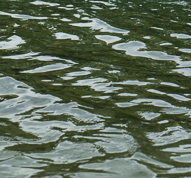
We desire to deepen the well of love in the world. We guarantee that every single purchase—whether engagement ring, wedding band, or piece of jewelry—directly impacts one person’s life by giving them access to clean water.
We do this by directly matching jewelry purchases to people in communities to ensure our funding has a one-to-one impact. We also show you the exact GPS coordinates and a photo of the water well your ring or piece of jewelry helped fund.
Customer Service
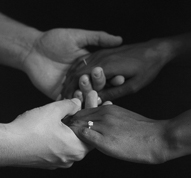
As a small, 100% founder- and employee-owned team, one-to-one encounters are at the heart of our values. Whichever way you want support throughout your engagement ring or jewelry purchase process, our team is here to accommodate you.
From high-touch to hands-off, video calls to text messages, you have our dedicated, responsive team on your side from the moment you start your search, to the day your well is built, to the time we meet again.
Engagement Rings, Bands, & Jewelry
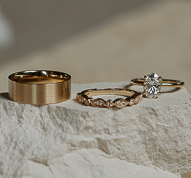
Every Do Amore design, whether one of our own or unique to you, is beautifully handcrafted in America and made specifically for you. Each ring is made to order, every time.
From classic to custom, you have the option to select from dozens of gorgeous settings or work with our design team to create something entirely bespoke. Plus, you are always covered for free inspections, polishing, cleaning, stone tightening, rhodium-plating, and resizing for life.
Our Promise
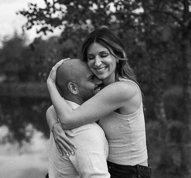
We care about what matters most to you, not what’s easiest for us. If it’s a minor change to a setting or arriving at a completely custom design, we work to ensure you get precisely what you love.
From statement-making to understated, we have options at any price point. Plus, you always have our team on your side searching to bring you every stone within your specifications. We also offer 30-day returns and a limited lifetime warranty to cover you in the rare event of a manufacturing defect.